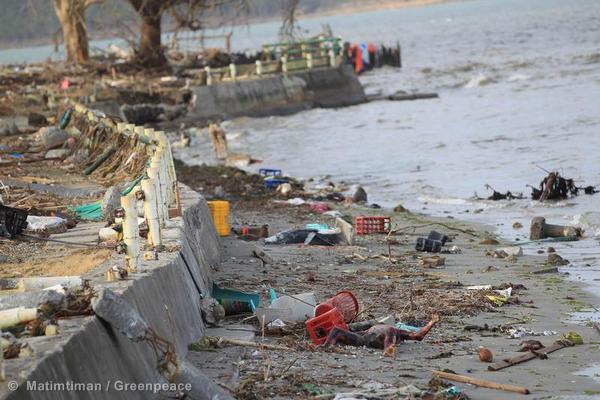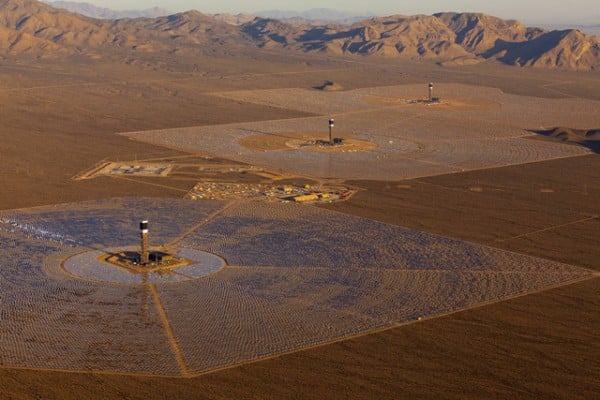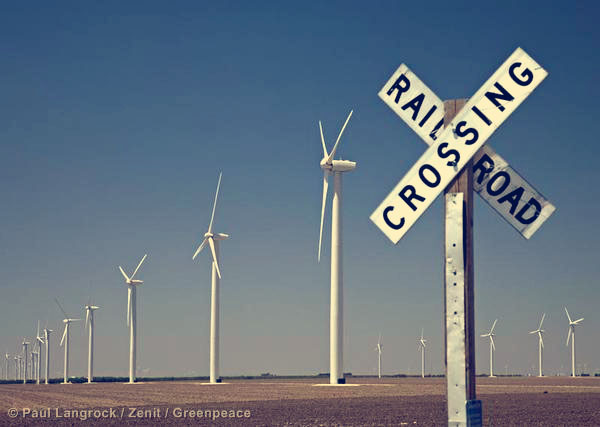With every new IPCC assessment, we are told about the direness of climate change, about its pervasiveness, its human causes, its potential to wreak global havoc. And with every new assessment, it becomes clear that the world is only driving itself deeper into the hole.
Its difficult not to be freaking out about this. Climate news is scary. Luckily, wading through all the awful allows you to find some of the OK, even a little bit of the hopeful. Greenpeace did some of that wading so you dont have to.
First the gunk, much of which you probably know, sounds basically like this: Fossil Fuel emissions are driving climate change. 2000-2010 was the decade of coal. The oceans are acidifying. Deforestation plays double, even triple duty by increasing emissions, reducing carbon storage, and decreasing community and wildlife resilience. Political and economic structures make Business as Usual economic and energy policy very difficult to dislodge. Populations of poorer nations are feeling climate impacts more acutely than those in the developed world. Climate change is already driving much global conflict.
Etc. etc. etc, yeah, grim.
But embedded in the IPCC’s message is some good news and yes, theres good news. There is still time to limit warming to less than 2 degrees Celsius, a number that most experts agree is the threshold between a a world we can manage living in and a world we cant imagine.
To get there, we need to act now. If we dont see deep reductions in emissions, like were talking 70%, then were screwed. And delaying real action to 2020 or even 2030, like many countries propose, will make that 2-degree target a pipe dream.
In recent years, much of the conversation around the climate has shifted to adaptation in other words, how do we make our societies, our infrastructures, our food systems, and our cultures resilient to the coming changes. This weeks installment of the IPCCs 2014 report which has been rolled out in sections deals with mitigation. How do we act now to reduce the severity of climate change, so that harm to ecosystems and civilization alike can be minimized.
Greenpeace USA is sensitive to both adaptation and mitigation. Right now, while we still can, we are trying to focus our attention on mitigation, however, as the window for action on that front is rapidly closing.
The thing is, reports like the IPCC assessments tend to make climate change into this huge, structural, unmanageable apocalypse that regular people can’t do anything about. It’s not true, and this report gives some clues as to how each and every one of us can act. Later this week, Greenpeace USA will post to this blog, giving you some advice about real, concrete steps you can take to help wean our species off of its addiction to greenhouse gas-emitting energy sources.
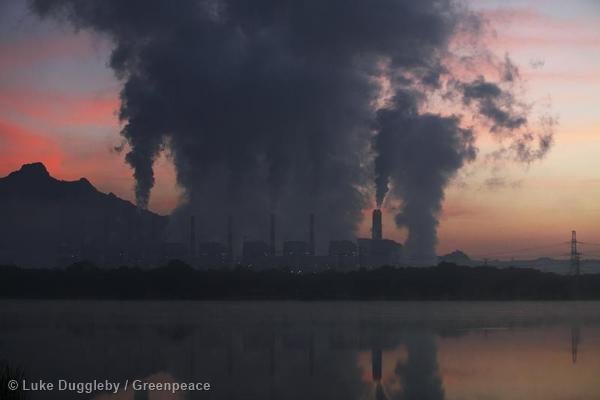
The Mae Moh Coal Burning Power Plant in Thailand. Its 13 generating units have a capacity to produce 2,625 megawatts and take up 135 sq km of land. It is the largest coal plant in Southeast Asia.
For now though, here are some of the general takeaways and the reasons for hope for your own peace of mind, for your own use, and, just in case some weirdo climate deniers back you into a corner, for a little ammunition to get them to back the F up.
1. Fossil fuels contributed to 78% of total greenhouse gas emissions increase between 1970 and 2010. And the general trend is that emissions are increasing, as people in the developing world are given access to electricity. It doesn’t need to be that way, and the IPCC lays out some real opportunities for development to occur with greater reliance on distributed renewable energy sources.But among the vital things for those of us in the industrialized world to take away from this fact is that serious emissions cuts in our own backyard have not even started yet. People talk like they have, but they haven’t and much of the reduction we have already experienced is due to economic downturn and efficiency, not renewable energy policy.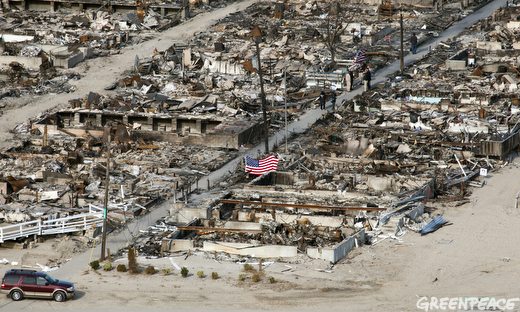
- A burned out section of the Breezy Point section of Queens, New York after Hurricane Sandy.
2. We can gain so much ground in the battle against climate change just by making a concerted effort to transition our energy system to renewables. In the very near term, this may mean that carbon capture and storage technologies and natural gas will play a larger role in the energy mix, but beyond the very near term, the IPCC is clear that this is not a solution. Carbon capture and storage is shaky at best, illusory at worst. And natural gas only doubles down on last century’s fossil fuel infrastructure (to say nothing of the fact that its greenhouse gas emissions might not even represent an improvement over coal and oil because of methane leakage).
The good thing is renewables are set to have their moment. Among IPCC experts, there was robust evidence and high agreement that many renewables technologies have achieved maturity in terms of performance and cost. Renewables, for instance, accounted for just over half of the new electricity-generating capacity added globally in 2012, led by growth in wind, hydro, and solar power.”
The problem, of course, is that renewables are competing in a landscape dominated by fossil fuel interests and infrastructure. For them to compete, they must be given the kind of deep investment that would make them competitiveand thats a huge investment of both direct dollars and indirect resources, like feed-in tariffs, a carbon tax, investment in associtated technology like storage, or tax rebates. Additionally, there is concern that renewables like wind and solar could never fill all the demand all the time, and that no matter what, we’ll need fossil fuels and nuclear to supplement that need.
Surprisingly, the IPCC was dismissive of that line of thinking. More on that in a minute. For now, let me leave you with this: placing a few recent studies side by side shows that building pipelines to double our capacity to distribute natural gas will cost more than an investment in electricity transmission that would permit 80% of our electricity come from renewable sources. In other words, it will cost more to double down on the distribution on natural gas than it would to seriously convert our transmission infrastructure to renewables-based electricity. Still think serious emissions cuts have started in our backyard?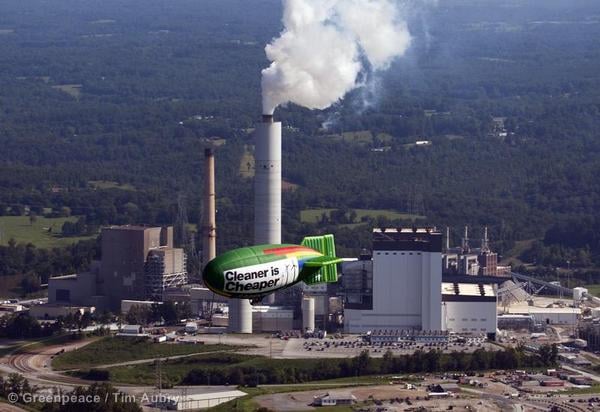
3. Efficiency. Like real efficiency.That and smart use and consumption of energy in homes will play a fundamental role in emission cuts. This is where individual actions may have the most impact. Near-term reductions in total energy demand will be vital to making mitigation strategies both successful and equitable.
We have the ability to be efficient here, without taking a huge bite out of our own prosperity. The IPCC is clear that pursuing efficiency and smart consumption while poor countries develop is the least we can do. The thing is, it’ll go a long way. In fact, a controversial study from last year showed that increases to efficiency and not a move toward natural gas account for large recent drops in the intensity of CO2 per unit of energy.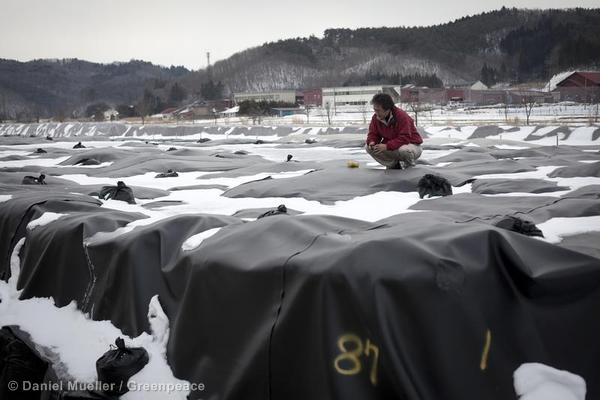
- A temporary nuclear intermediate waste storage in the Prefecture Fukushima, Japan. Radioactive polluted soil, branches and leafs are stored in black sacks.
4. Nuclear is often dragged out by advocates as a necessary technology to avoid some concerns about renewables, particularly that the availability of wind and solar is variable (i.e. relatively un-windy days, night). But the report notes that nuclear is on the decline, and while it might contribute to a near-term low-carbon energy system, excluding nuclear from the set of admissible technologies would only result in a slight increase of mitigation costs compared to the full technology portfolio.
In other words, producing capacity among renewables, including boosting storage capacity to take care of that variability, would not represent a huge cost over building new nuclear facilities. And considering the risks of nuclear, particularly in a more weather variable age (Fukushima anyone?), maybe thats for the best.
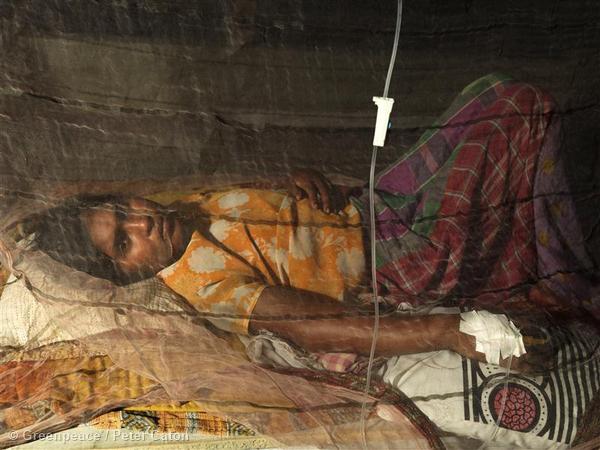
A young women lies behind a net on a makeshift bed at a medical camp in Bali island in the Sundarbans. Reports of cholera are increasing due to stagnated water which is also giving birth to an influx of mosquitoes. Scientists estimate that over 70,000 people, living effectively on the front line of climate change, will be displaced from the Sundarbans due to sea level rise by the year 2030.
5. But the thing is, the cost of action is tiny compared to doing nothing. And, when compared to the potential costs of climate change itself, they are well worth it. The report estimates that cutting greehouse gas emissions to the required level would reduce global growth by 0.06% a minuscule price to pay for the security of not destroying the planet. And it would only lead to a 1.7% reduction in global consumption by 2030. Considering were basing that number on trends in which people in countries like the United States have not even begun to act as if climate change is a reality, this might even be a more negligible number than it appears to be.
6. The quicker we act, the cheaper the costs. Energy equality is vital, and we believe that the concerns of climate change must be balanced against a justice for all the worlds citizens. As countries in the developing world begin to expand the availability of electricity to their citizens, we must ensure that they are doing it using renewable and sustainable technologies.The quicker we act on making sure distribution of electricity occurs with climate change in mind, the more we will be able to ensure that renewables make up a large share of that mix.
In addition, the more we mitigate nowby reducing emissions and making sure all the world’s energy supply is more dependent on renewablesthe less burdensome will be the costs of climate change. Which is actually the elephant in the room, isn’t it?Like doesn’t all this talk about costs seem kind of ridiculous compared to what an era of increased weather-related devastation, food insecurity, conflict, sea-level rise, human migration, ecosystem loss, grim stuff grim stuff grim stuff? As the IPCC states in clear, quantitative terms, costs of serious mitigation are infinitesimally small when put into context.It’s like, why are we even having this conversation? Oh yeah, because of #7.
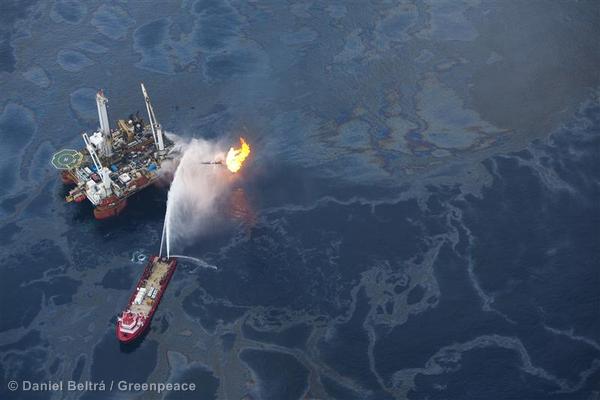
Boats try unsuccessfully to clean oil from the ocean, near the site of the Deepwater Horizon disaster.
7. In the words of the IPCC’s own Summary for Policy Makers:Mitigation policy could devalue fossil fuel assets, and reduce revenues for fossil fuel exporters, but differences between regions and fuels exist (high confidence). Most mitigation scenarios are associated with reduced revenues from coal and oil trade for major exporters (high confidence). The effect of mitigation on natural gas exporters revenues is more uncertain with some studies showing possible benefits for export revenues in the medium term until about 2050 (medium confidence). The availability of CCS would reduce the adverse effect of mitigation on the value of fossil fuel assets (medium confidence).”
In other words, fossil fuel companies stand to lose out if we are going to really protect ourselves and our world from climate change. Given that industry includes some of the richest, most powerful companies and people in the world, the fact that the conversation is still going on is probably no surprise at all.

